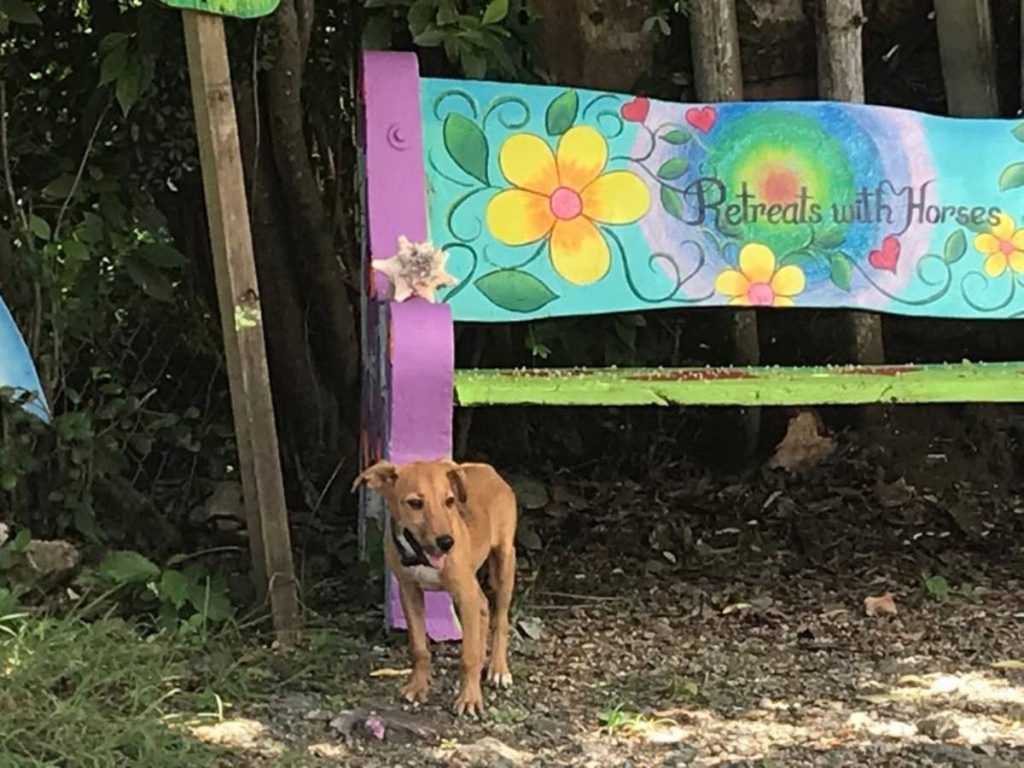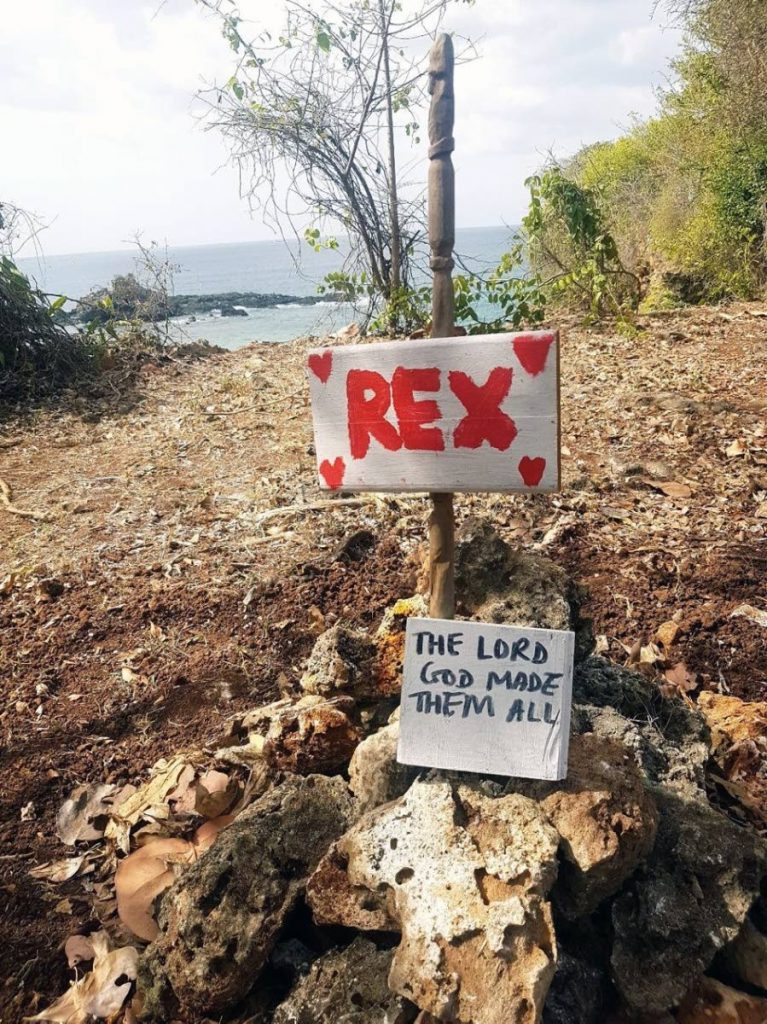Where animals are honoured

ELSPETH BLANCHE DUNCAN
AT the clifftop gravesite, a grief-stricken grandmother wails, her unintelligible words floating on the wind to the ocean.
The deceased is her grandson Kymarni’s puppy, Blade, a stray found on Buccoo beach. Within two weeks, he had become the young boy’s companion. A neighbour, Veronika Danzer-LaFortune, co-founder and president of the Healing with Horses (HWH) Foundation, describes seeing the happiness shared by Kymarni and Blade when the pup was still alive.
As Kymarni lay in the hammock in the verandah, reading his book, the pup would sleep below him; or they would run around the house, playing together. Because the pup occasionally trotted across to the stables, his owners would tie him to protect him from cars that sped by, despite the fact that the street is in a residential area frequented by children and animals. Tying the pup also protected him from the threats of those who have no qualms about poisoning or “getting rid of” animals. The animal’s untimely death was probably the result of such an action.
On the morning of Independence Day, Danzer-LaFortune observed the pup looking very skinny and bleeding from his anus. She spoke with Kymarni, telling him that the pup was now his responsibility and he should care for it with love and attention, like a baby.
Four days later, the stench of death under the office at the stables led Danzer-LaFortune to the body of the pup, bloated beyond recognition. Jayon, a special-needs adult who has been working with the foundation for five years, equipped himself with gloves and a garbage bag and prepared himself mentally to remove the body, which was close to exploding.
The corpse was driven in a golf cart to Buccoo cliff, where the Healing with Horses magical park is located. On the outskirts of the park is a pet cemetery, known as “The Tribe Member Cemetery” – a space reserved for the interment of beloved animals that have passed on. Six special creatures are currently lying at rest in that picturesque spot, overlooking the ocean: Navajo, a horse; Ocean Sage, a cat; Rex, a dog; and Blade, the pup, are buried there.

Buried within the park are Lopez, HWH’s popular dog that, in life, accompanied them for 12 years on their trail rides and swims, and Leo, the white pony who passed away this year, aged 39. At 5 pm on Independence Day, Danzer-LaFortune went up to the cliff with Kymarni and let him spend quiet time painting the name “Blade” on a 1.5-by-1.5 foot stepping stone. This would be the gravestone to mark the pup’s resting place, next to Navajo’s grave.
The cycle of life is represented in the burying of the dead and the planting of new life. Around the graves, volunteers and students have planted sea grape and almond trees donated by Environment Tobago and the German Embassy, to help prevent coastal erosion, beautify the cemetery and stand in memory of the dearly departed. Emma Knott, a young animal lover and equestrian who was Navajo’s team partner, sees the horse’s grave as a peaceful spot for meditation. There, in quiet moments, she can sit and enjoy the sea breezes, while remembering her animal friend, a former HWH herd member who passed away two years ago at the age of 28.
“It is important that we honour our animals after they pass away, because they spend their entire lives serving us and doing good for us,” Knott explained. “It is only respectful that we pay attention to their physical vessel after their souls have departed.
“I still feel a very strong connection to my horse that passed away about three years ago. I believe that in most aspects of my life he still guides me and will continue to do so. I’m thankful that I had the chance to meet him.
“When I went to the animal cemetery, I felt his energy vibrate throughout my body and cleanse my soul. His presence grounds me.”
Generally, animal-loving children have an innate desire to honour deceased pets and animals with funerals. It is as natural for such children to honour them in death as it is to do so in life. One would hope that all children had this connection with and reverence for the animal kingdom.
Growing up in Germany, Danzer-La Fortune would collect the dead animals she met on the highway in front of her home after school: frogs, cats, water rats and others. “I would put the animal in a box. I would dig a hole and make something beautiful for it…decorate the grave, that piece of earth, with a cross, flowers and stones. It gave me something to do…a purpose.”
Her family welcomed her little cemetery, which stretched along the driveway to their garage. She was allowed to do what she needed to, in honour of the deceased creatures. “There was a cat that I minded. She got hit on the highway. I felt like I wanted to care for her. I was responsible for her. So I gave her a resting space and covered it up. Honouring the animal gave me a rewarding feeling.”
The land on which HWH has created the cemetery for “beloved family members that were animals” is state land, and the foundation is opening it up to the public. “We are giving you a space and offering you help to have a grave spot for your animal on the outskirts of the magical park,” Danzer-LaFortune says.
“Differently-abled workers will help to dig a grave and prepare a special space for the animals. It is about teamwork.
“These animals, with their unconditional love, have brought us together.”


Comments
"Where animals are honoured"